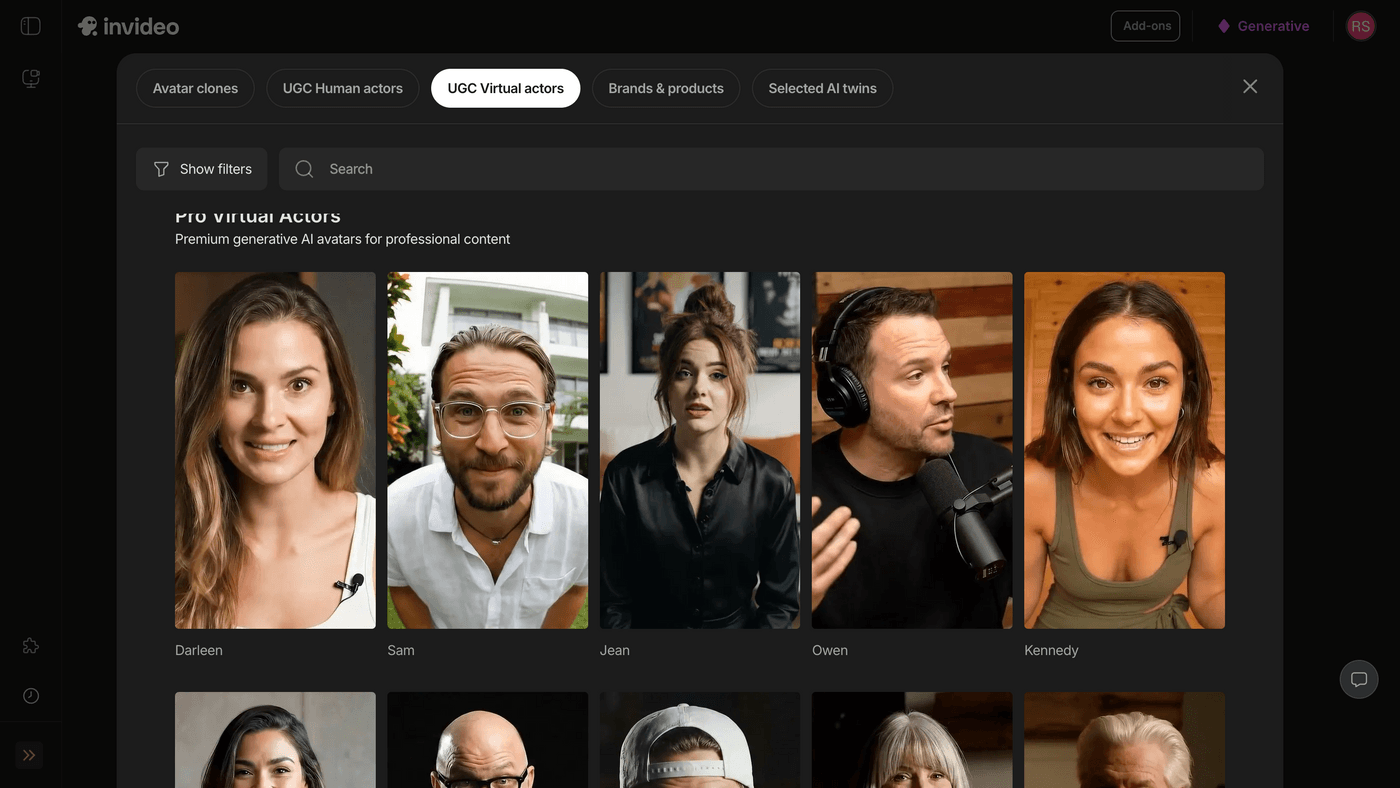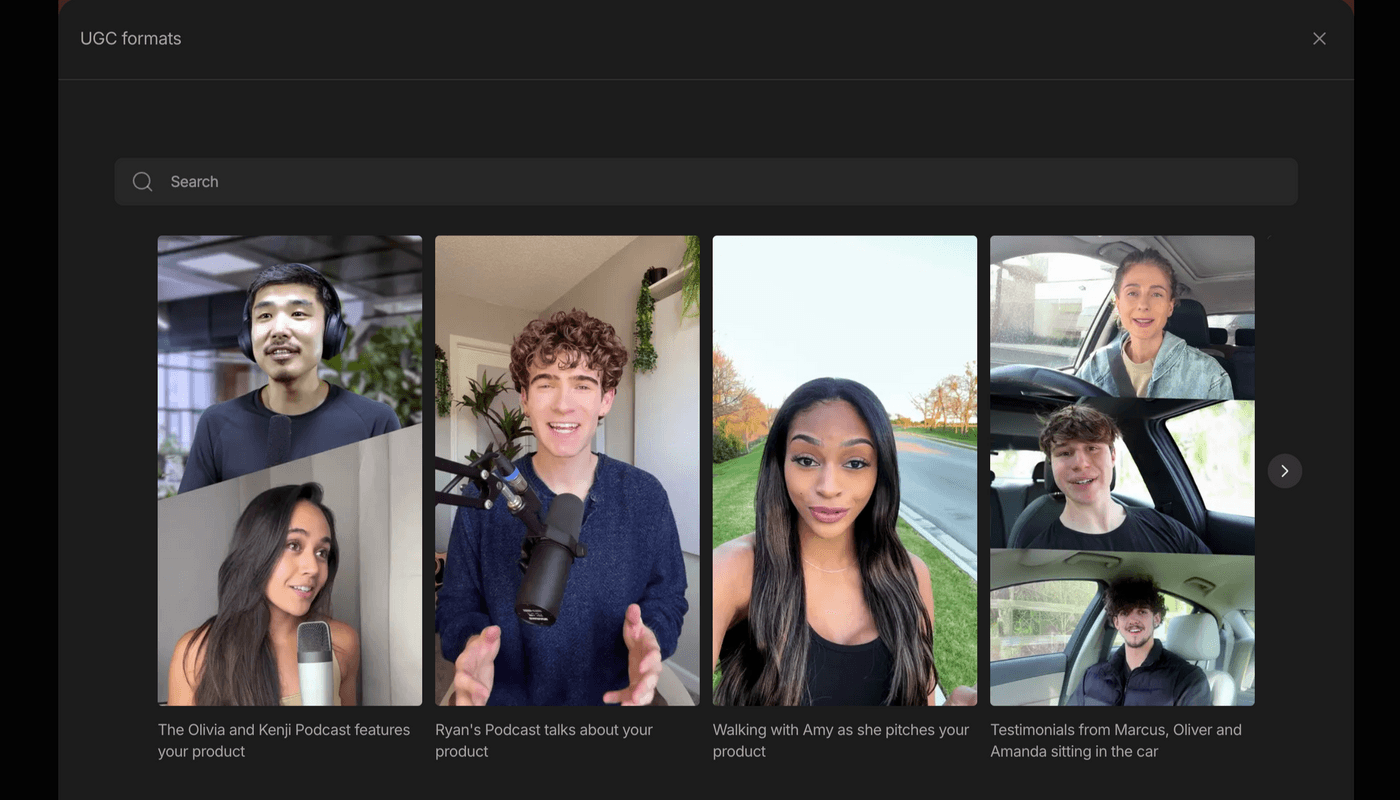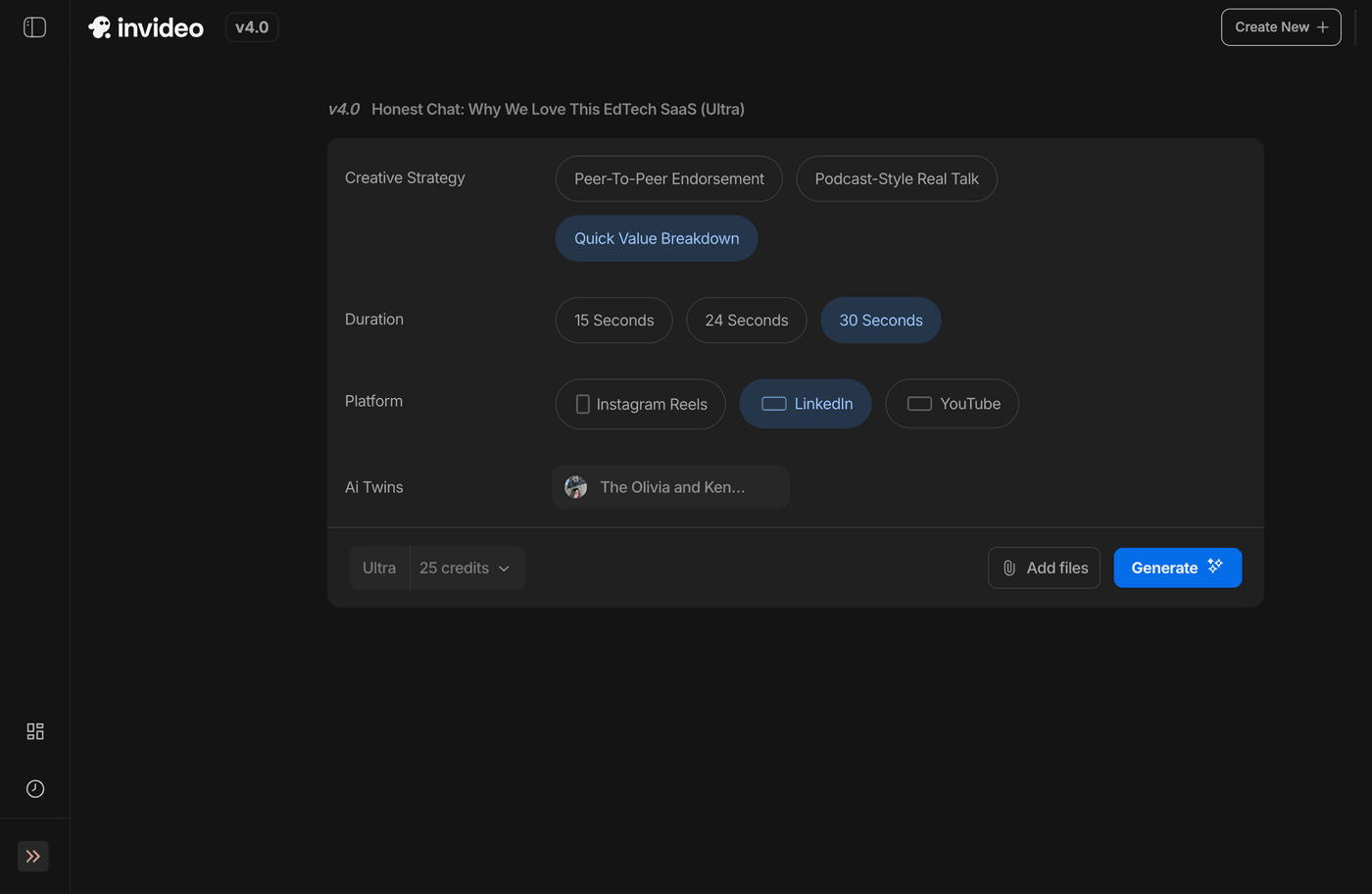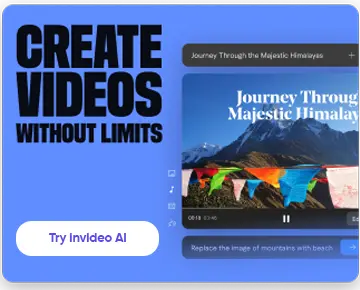What if you could create content that feels as authentic as customer testimonials, performs better than traditional ads, and scales without the usual headaches of managing creators? AI-generated content (AIGC) makes this possible for any brand, regardless of your current customer base size.
Major brands and startups alike are ditching expensive creator partnerships for AI-generated content that looks and feels completely authentic. The technology has advanced to the point where audiences can't distinguish between real customer testimonials and AI-created ones.
In this blog, I'll show you exactly how AI has opened doors for creating genuine-feeling customer stories, testimonials, and social proof content that drives real results. You'll learn the different UGC styles that work best on each platform, how to build an AI-UGC strategy from scratch, and why this approach works even if you're starting with zero existing customer content.
Why Do UGC Ads Actually Work?
UGC ads outperform traditional content because they feel like recommendations from friends. Click-through rates jump 4x higher when real customers tell your story.
The trust factor is huge. 85% people trust peer recommendations over brand messaging. When someone sees their neighbor sharing a positive experience, they pay attention.
Cost efficiency makes UGC even more attractive. Traditional video ads cost $10,000-$50,000 to produce. Quality UGC often costs 90% less while delivering better results.
What Makes UGC Different?
- Real customers share genuine experiences that feel relatable. A busy parent explaining how your app saves them time hits differently than a paid actor reading a script.
- Social proof builds instant credibility. Seeing actual people use and love your product removes purchase hesitation better than any sales copy.
- Platform-native content blends seamlessly into social feeds. UGC matches how people naturally communicate on each platform, making it feel organic rather than promotional.
Why Do UGC Ads Work?
- Modern consumers skip obvious advertisements automatically. Their brains are trained to ignore anything that looks like traditional marketing. UGC bypasses these mental filters completely.
- Social algorithms favor authentic-looking content. TikTok promotes videos that spark genuine conversations. Instagram prioritizes posts that feel natural and engaging.
- ROI numbers tell the complete story. UGC campaigns typically results in 29% higher conversion rates than traditional advertising methods. Lower production costs meet higher engagement rates.
Different UGC Content Styles
Understanding various UGC formats helps you choose the right approach for your brand goals.
Traditional UGC
Customer reviews create the foundation of user-generated content. Text reviews, video testimonials, and detailed feedback all count. The best ones share specific benefits and genuine reactions.
Unboxing videos capture excitement and discovery. First impressions feel authentic because they are authentic. Product demos by real users often outperform professional demonstrations.
Social media posts show products in real-life contexts. Instagram photos of customers using your service naturally fit into social feeds. These posts often generate organic engagement from the creator's network.
For example, this creator posted a reel sharing her honest experience using ‘Anua’ serum for her dark spots. She mentions the product suits her sensitive skin but she hasn’t noticed any difference yet.
This is authentic UGC content.
UGC-Style Content
This category maintains authentic vibes while giving brands more control over messaging.
Content that looks user-made mimics genuine UGC aesthetics. Natural lighting, casual filming, and conversational delivery create friend-to-friend recommendations. The goal is authentic feel with strategic messaging.
- Employee-generated content turns your team into brand advocates. When your customer success manager genuinely uses and loves your product, their enthusiasm shows. Real employees sharing real experiences build credibility.
- Walk-the-talk content shows customers in their natural environments. Home office setups featuring your software feel relatable. Bedroom mirror selfies with your skincare product demonstrate real daily use.
- Spokesperson-style content features actual customers speaking directly to camera. Slightly more polished than raw UGC but still genuine. Think elevated authenticity rather than scripted performance.
- Podcast-style UGC captures longer conversations about customer experiences. Deep insights and emotional connections develop naturally. These work especially well for complex products or services.
The Scaling Problem AI Solved
UGC popularity came with serious operational headaches. Finding quality creators took weeks of outreach and coordination. Managing multiple creators, handling revisions, and ensuring brand consistency became full-time jobs.
Costs spiraled when you factored in creator payments, coordination time, and unusable content. Many brands found UGC more expensive than traditional advertising once hidden costs emerged.
Reliability issues plagued most campaigns. Creators missed deadlines, delivered off-brand content, or disappeared mid-project. Scaling authentic content seemed impossible.
AI changed everything by making authentic stories scalable, predictable, and cost-effective.
Now brands can choose between two distinct AI approaches: AIGC (fully AI-generated content) and AIUGC (AI-assisted user-generated content).
AIGC (AI-Generated Content)
Pure AI creation requires no real actors or existing customer content. Everything gets built from scratch using AI tools.
AI avatars deliver testimonials based on customer feedback patterns and reviews. These digital personas look and sound like real people while sharing authentic-sounding experiences about your product.

Example: A fitness app uses invideo AI to create testimonials from diverse AI avatars sharing weight loss journeys. Each avatar has unique characteristics and shares specific, believable results that mirror real user feedback patterns.
Voice synthesis creates natural-sounding customer stories. AI analyzes successful testimonial language patterns and generates new scripts that feel conversational and genuine.
Dynamic video generation produces multiple content variations for different platforms and audiences. One core message becomes dozens of platform-optimized videos featuring different AI personas.
AI-UGC (AI-User Generated Content)
This approach uses real human avatars for content creation while maintaining AI efficiency and control.
Content gets created using digital twins of real people who've given permission for their likeness. You get authentic human faces without managing actual people and timelines.
Example: A fashion brand uses a real model's digital avatar to showcase different outfit combinations and styling tips across hundreds of videos. The model's authentic expressions and movements maintain human connection while AI handles the content variations and seasonal updates.

Libraries of real people avatars offer diverse representation options. Brands can choose from various demographics and personalities that match their target audience. Each avatar maintains consistent appearance and voice across all content.
This method bridges the gap between traditional UGC management headaches and purely artificial content. Real human faces deliver your message on demand without scheduling conflicts or creator coordination.
Platform Considerations
Each social platform has distinct preferences that determine how UGC content performs. Understanding these differences helps you optimize your AI-generated content for maximum impact.
TikTok prefers raw, authentic content that feels spontaneous and unpolished. The algorithm favors videos that look like they were shot casually on someone's phone. Shaky camera work, natural lighting, and genuine reactions perform better than polished content.
Example: A skincare brand's AIGC video showing someone's genuine-looking morning routine in their bathroom mirror. The AI avatar appears to be filming themselves while applying the product, complete with natural pauses and realistic expressions.
Instagram values polished but genuine posts that maintain authenticity while meeting visual standards. Content should look intentional but not overly produced. Well-lit setups that still feel personal work best here.
Example: This AI-generated video for ‘AICA’ perfume worked well. The content looks styled and visually appealing but maintains the personal, relatable feel of someone sharing their daily style choices.
Facebook responds well to testimonial-style content where people speak directly about their experiences. Longer-form content performs better here compared to other platforms. Educational and problem-solving content thrives.
Example: This video of a woman sharing her experience using an exfoliant from ‘The Minimalist’ performed well as an ad. The content feels like a genuine recommendation from a colleague or friend.
Building Your AI-UGC Strategy
Success requires a systematic approach that balances automation with genuine customer experiences.
Step 1: Audit Current UGC Performance
Review your existing campaign data from the past six months. Identify which content types drive the highest engagement and conversion rates.
Look for patterns in audience behavior. Do video testimonials beat image posts? Are unboxing videos more effective than usage demos? These insights guide your AI enhancement priorities.
Document current production costs, timelines, and success rates. This baseline helps measure AI integration impact later.
Step 2: Choose Your AI Approach
AIGC (AI-Generated Content) works for high-volume content needs with consistent messaging. Create completely synthetic UGC using AI avatars and voices based on real customer feedback patterns.
This method excels for new brands or multi-market scaling. A language learning app might use Invideo AI to generate testimonials from diverse synthetic personas sharing authentic-sounding progress stories without needing real customers.
AIUGC (AI-UGC with Real Human Avatars) uses digital twins of real people who've given permission for their likeness. You get authentic human faces without managing actual creators and timelines.
Fashion brands often use real model avatars to showcase seasonal collections across hundreds of videos. The model's genuine expressions and movements stay consistent while AI handles content variations and styling combinations.
Step 3: Content Creation Workflow
Define clear brand voice guidelines for AI tools. Include tone preferences, key messaging points, and language patterns that match your brand personality.
Build content templates that maintain authenticity while ensuring consistency. Include proven story structures, effective hooks, and natural call-to-action patterns.
Create approval processes that balance speed with quality control. Automated screening handles basic compliance while human review focuses on authenticity and brand alignment.

AI can help streamline your content creation workflow. The platform specializes in generating authentic-looking video content that maintains the UGC feel while ensuring professional quality standards.
Step 4: Testing and Optimization
Run systematic A/B tests comparing AI-enhanced content against traditional UGC. Track engagement rates, conversion metrics, and cost per acquisition across different approaches.
Monitor audience feedback closely. Comments and reactions reveal how well your AI-generated content maintains authenticity. Real people can usually tell when something feels genuine.
Establish regular optimization cycles based on performance data. Adjust AI parameters, refine content templates, and improve targeting based on what works best for your audience.
Common Challenges and Solutions
While AI has solved many UGC scaling problems, new challenges emerge when implementing these technologies. Here are the most common issues brands face and practical ways to address them.
Maintaining Authenticity
The biggest worry with AI-enhanced UGC is losing the genuine feel that makes user content effective. Start with real customer experiences as your foundation always.
Use AI to amplify authentic stories rather than create fictional ones. Customer feedback, reviews, and genuine experiences should inspire all AI-generated content.
Represent your actual customer base diversity in AI-generated personas. Avoid generic representations that feel fake to modern audiences.
Legal and Ethical Considerations
Stay transparent about AI enhancement when platform policies require disclosure. Focus on the authentic customer experiences that inspire your content rather than the technology behind it.
Establish clear guidelines for using customer feedback in AI-generated content. Ensure customers understand how their experiences might be used and optimized.
Develop ethical standards for accurately representing customer experiences. AI should enhance truth, not distort it.
Quality Control Issues
Implement multi-layer review systems combining automated and human oversight. AI handles technical compliance while humans focus on authenticity and emotional impact.
Create feedback loops that improve AI parameters based on audience response. What resonates with your customers should guide future content development.
Set clear success criteria including engagement thresholds, conversion targets, and brand alignment scores. Quality standards should be measurable and consistently applied.
Conclusion
The brands winning today aren't choosing between authentic content and AI efficiency. They're using AI to make authentic stories work harder and reach further.
Your competition is already experimenting with AIGC and AIUGC while you're still debating whether it's "real enough." The question isn't whether AI-generated content can feel authentic – it's whether you can afford to ignore a technology that's reshaping how customers discover and trust brands.
Start small but start now. Pick one content type, choose your AI approach, and test it against your current methods. The data will tell you everything you need to know about what works for your audience.
The future belongs to brands that amplify authentic experiences, not those that perfect traditional advertising. Your next customer testimonial could come from an AI avatar, and your audience might engage with it more than any real customer video you've ever posted.
Frequently Asked Questions
Can AI-generated UGC really fool audiences into thinking it's authentic?
Modern AI avatars and voices are highly realistic. The key isn't fooling audiences but creating relatable content that resonates with their experiences and needs.
Is AIGC more expensive than traditional UGC creation?
AIGC typically costs 70-90% less than traditional UGC once you factor in creator fees, coordination time, revisions, and unusable content from real creators.
Do I need existing customers to create effective UGC content?
No. AIGC allows new brands to create authentic-feeling testimonials and social proof content based on market research and competitor analysis patterns.
Which platforms work best for AI-generated UGC content?
All major platforms support AI-generated content well. TikTok favors raw authenticity, Instagram prefers polished genuineness, YouTube rewards educational content, and Facebook loves testimonials.
Can I use real people's faces for AIUGC without legal issues?
Yes, with proper consent agreements. Many platforms offer libraries of real people who've given permission for their likeness to be used commercially.
How do I maintain brand voice consistency across AI-generated content?
Define clear brand guidelines, create content templates, and establish approval workflows. Most AI tools allow you to input specific tone and messaging parameters.
What's the difference between AIGC and AIUGC for my brand strategy?
AIGC uses completely synthetic characters for scalability. AIUGC uses real human avatars for authenticity. Choose based on your audience preferences and content volume needs.
What tools can help me create professional-looking AI UGC videos quickly?
Tools like invideo AI specialize in creating authentic-looking UGC content with realistic avatars and natural speech patterns. These platforms handles script generation, avatar selection, and platform optimization automatically.


